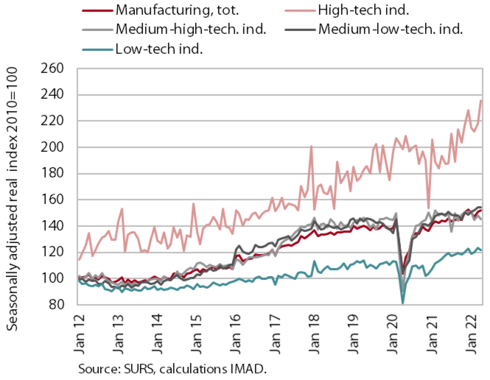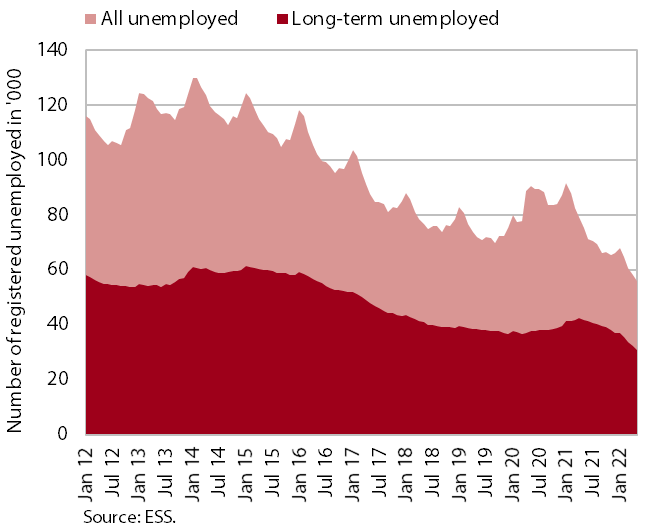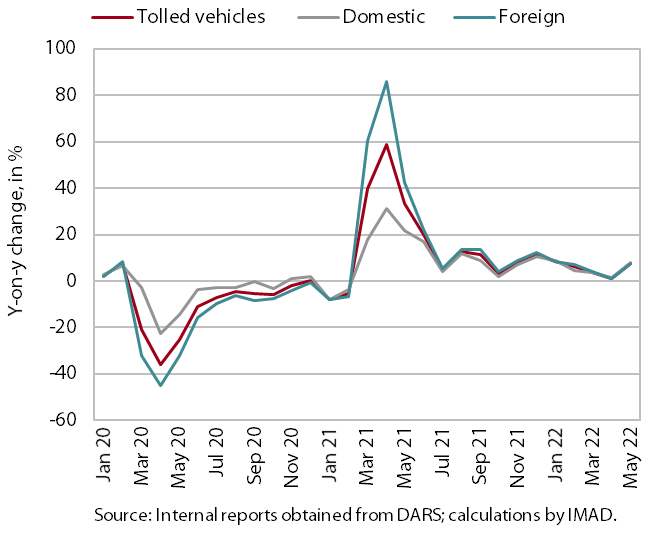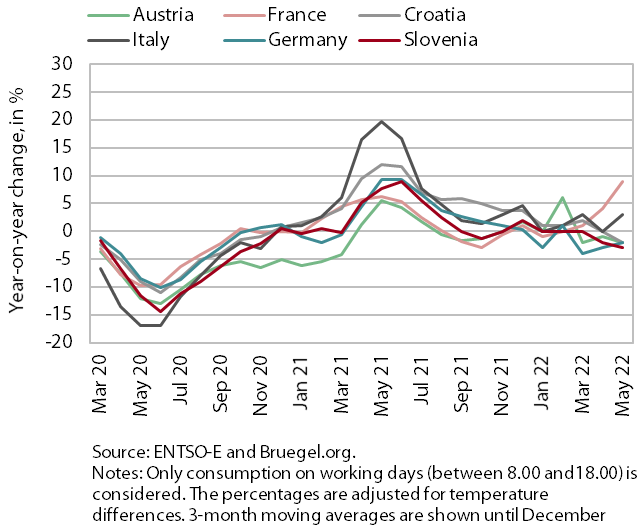Charts of the Week
Current economic trends from 6 to 10 June 2022: manufacturing, registered unemployment, traffic of electronically tolled vehicles and electricity consumption
Manufacturing production strengthened somewhat in April after growth slowed in the first quarter of this year. Given the high demand in the labour market, registered unemployment continues to fall. In May, the number of unemployed, including the long-term unemployed, fell by a quarter compared with the same period last year. Freight traffic on Slovenian motorways was higher than a year ago and also higher than before the epidemic. Similar to Slovenia’s main trading partners, electricity consumption in May was lower than in the same period last year and lower than in April 2019. We estimate that both household and industrial consumption were lower.
Manufacturing, April 2022

Manufacturing production strengthened somewhat in April after growth slowed in the first quarter of this year. The strongest increase was in high-technology industries, and more modest than in previous months in medium-low technology industries. Production in low and medium-high technology industries declined. In the latter, production in the first four months was lower than in the same period last year, mainly due to motor vehicle manufacturing (mainly the impact of a drop in production at a major car manufacturer due to the difficult situation in the automotive market).
Registered unemployment, May 2022

With the unemployment rate at its lowest level, the decline in the number of registered unemployed in May was similar to the previous two months (-2.2%), according to the seasonally adjusted data. According to original data, 55,854 people were unemployed at the end of May, 3.8% fewer than at the end of April and 25.7% fewer than a year earlier. Under conditions of high demand for labour, which is also reflected in the high vacancy rate, the number of long-term unemployed has also been declining since May last year – their number fell by a quarter year-on-year in May. Of the long-term unemployed, more than 70% have been unemployed for more than two years.
Traffic of electronically tolled vehicles on Slovenian motorways, May 2022

Freight traffic on Slovenian motorways was up 8% year-on-year in May. Traffic in May 2020 was a quarter lower than in May 2019 due to containment measures (and one less working day), before returning to pre-epidemic levels in May 2021. The significant increase in May 2022 was almost the same year-on-year as compared to May 2019 (7%) and is also calendar adjusted, as May had 21 working days in all three years compared. Freight traffic volumes were 9% higher in May this year than in April. The share of foreign vehicle traffic, which varies slightly from month to month, was 60% in May, 1.8 p.p. lower than in the same month before the epidemic. In the compared cumulative sums from January to May, the difference was much smaller, only 0.6 p.p., indicating that the epidemic did not lead to any significant changes in the traffic structure.
Electricity consumption, May 2022

Electricity consumption in May was 3% lower year-on-year and 7% lower than in May 2019. We estimate that the lower consumption was due to both lower household and industrial consumption. Household consumption is lower due to a better epidemic situation, while industrial consumption is lower for at least two reasons. The first reason could be supply chain problems and material shortages, which, according to the survey data, worsened again at the turn of the second quarter after having calmed down somewhat in the first quarter of the year. The second reason could be the current energy crisis, which has prompted some more energy-intensive companies to adjust their production volumes. Among Slovenia’s main trading partners, consumption in May was lower year-on-year in Austria, Germany and Croatia (by 2% each), while it was higher in Italy and France (by 3% and 9% respectively). Compared to May 2019, consumption was lower in Austria (-5%), Croatia (-5%) and Germany (–3%), while consumption in France and Italy remained about the same.
